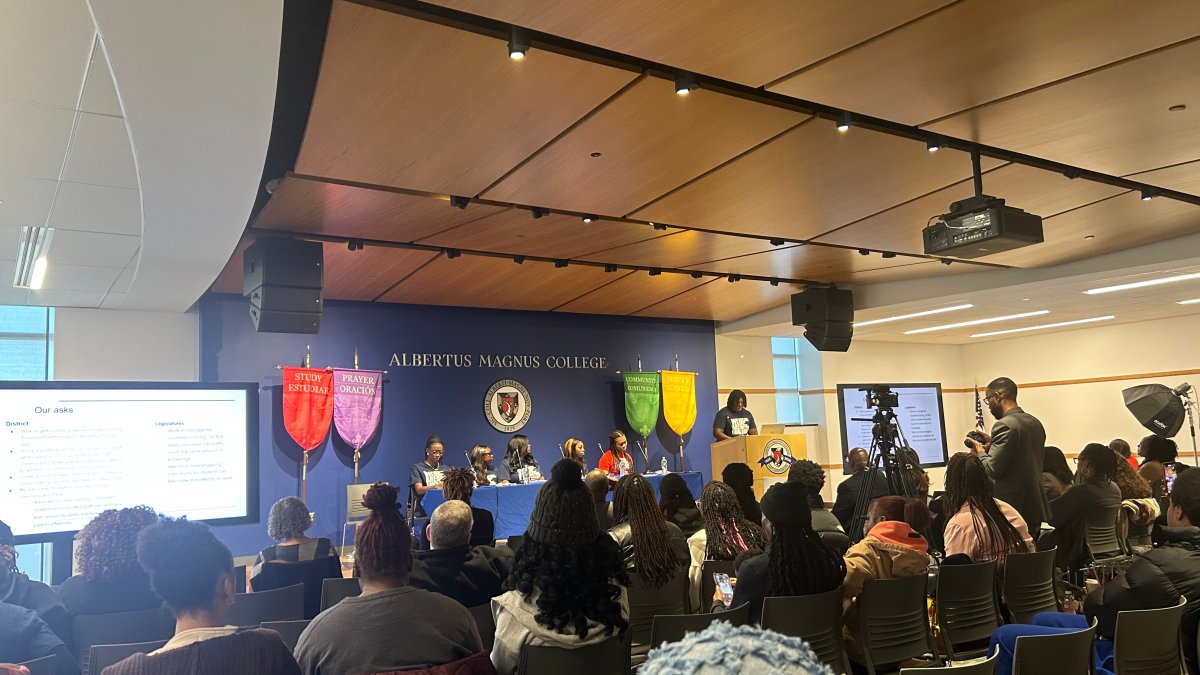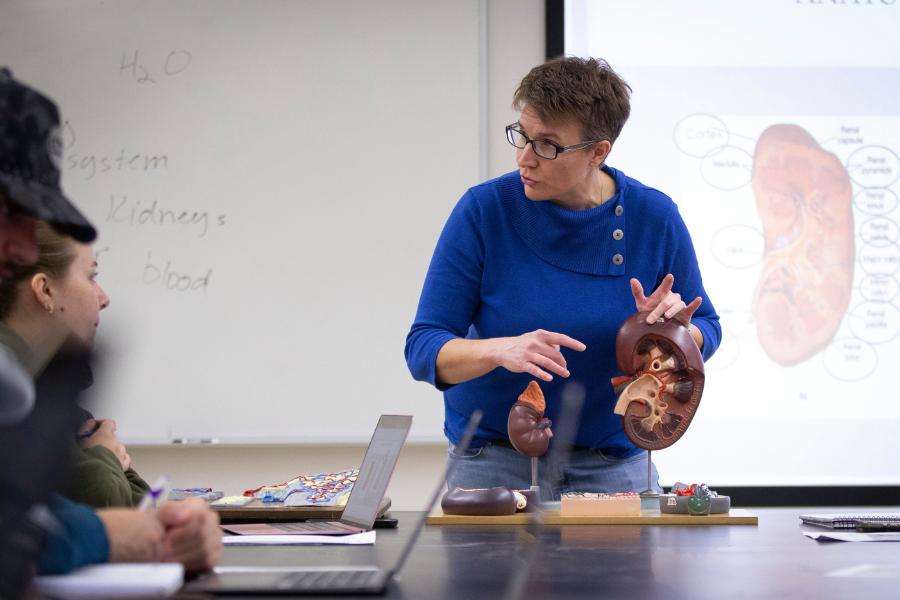High school students advocate for education reforms for next generation – NBC Connecticut

Higher Heights Education Summit Advances SDG 4: Quality Education
Executive Summary
On Saturday, the Higher Heights Education Summit convened high school students, educators, and state leaders from the New Haven area to address critical issues in the education system. The event served as a platform for student advocacy, directly aligning with the principles of Sustainable Development Goal 4 (SDG 4), which aims to ensure inclusive and equitable quality education and promote lifelong learning opportunities for all. Student presentations and discussions focused on key targets within SDG 4, including equal access, support for learners with disabilities, and the quality of teacher training.
Student Engagement and Inclusive Decision-Making
A central theme of the summit was the empowerment of student voices in educational policy, a practice essential for building the strong and inclusive institutions described in SDG 16. Students expressed a strong desire to be heard in decisions that shape their future.
- Jayvon Givan, a high school sophomore, stated, “I really feel like I should speak and use my voice… in this day and age we aren’t really, most teens aren’t really heard.”
- Nianni Hunter, a high school senior, emphasized the students’ role, noting, “We’re actively creating the next generation… we need help.”
Key Thematic Areas Aligned with SDG 4 Targets
Student presentations addressed several areas critical to achieving Quality Education (SDG 4) and Reducing Inequalities (SDG 10). The primary topics included:
- Post-Secondary Education and Careers: This discussion aligns with SDG Target 4.3, which seeks to ensure equal access for all to affordable and quality technical, vocational, and tertiary education.
- Accommodation for Students with Disabilities: This directly supports SDG Target 4.5, which aims to eliminate disparities in education and ensure equal access for vulnerable persons, including those with disabilities.
- Enhanced Teacher Training: This corresponds with SDG Target 4.c, which calls for a substantial increase in the supply of qualified teachers.
- Structural Education System Reform: This overarching concern reflects the goal of SDG Target 4.a to build and upgrade education facilities and provide safe, inclusive, and effective learning environments for all.
Case Study: Advocacy for Vulnerable Learners
The personal testimony of student Jayvon Givan highlighted the importance of targeted support systems in achieving equitable educational outcomes. Givan shared his past challenges with speech impediments and reading difficulties, emphasizing how educator and family support was crucial to his success. His desire to advocate for others in similar situations underscores the summit’s focus on leaving no one behind, a core principle of the 2030 Agenda for Sustainable Development.
Givan’s advocacy reflects a commitment to ensuring all students receive necessary assistance, stating, “Despite someone’s story, everyone needs help and we [need] to help students that can’t help themselves or don’t have people that need to help them.” This sentiment directly addresses the need for inclusive systems that support all learners, particularly those most vulnerable, as mandated by SDG 4 and SDG 10.
Analysis of the Article in Relation to Sustainable Development Goals
1. Which SDGs are addressed or connected to the issues highlighted in the article?
-
SDG 4: Quality Education
- The entire article is centered on education. It discusses a summit where students, educators, and state leaders deliberate on the “future of education,” including topics like post-secondary careers, teacher training, and the overall structure of the education system.
-
SDG 10: Reduced Inequalities
- The article addresses inequalities within the education system by highlighting the need for “accommodation for students with disabilities.” The personal story of a student who struggled with speech and reading and the call to “help students that can’t help themselves” directly relate to reducing inequalities and ensuring support for vulnerable students.
-
SDG 16: Peace, Justice and Strong Institutions
- The article touches upon this goal by showcasing an initiative that promotes inclusive and participatory decision-making. The “Higher Heights Education Summit” provides a platform for high school students to “speak and use my voice” in discussions with “educators and state leaders,” which is a fundamental aspect of responsive and inclusive institutions.
2. What specific targets under those SDGs can be identified based on the article’s content?
-
Targets under SDG 4 (Quality Education)
- Target 4.5: By 2030, eliminate gender disparities in education and ensure equal access to all levels of education and vocational training for the vulnerable, including persons with disabilities…
- This target is directly identified through the students’ focus on “accommodation for students with disabilities” and the story of Jayvon Givan, who had “problems with speech and reading” and now wants to “advocate for students going through similar situations.”
- Target 4.c: By 2030, substantially increase the supply of qualified teachers…
- This is addressed by the students raising “training for teachers” as a key topic for discussion at the summit, indicating a concern for the quality and preparedness of educators.
- Target 4.3: By 2030, ensure equal access for all women and men to affordable and quality technical, vocational and tertiary education, including university.
- This target is relevant as students gave presentations on “topics surrounding post-secondary education careers,” showing a focus on the transition from high school to further education and employment.
- Target 4.5: By 2030, eliminate gender disparities in education and ensure equal access to all levels of education and vocational training for the vulnerable, including persons with disabilities…
-
Targets under SDG 10 (Reduced Inequalities)
- Target 10.2: By 2030, empower and promote the social, economic and political inclusion of all, irrespective of age, sex, disability…
- The summit itself empowers students, a specific age group, to be politically included in shaping education policy. The focus on students with disabilities further aligns with this target by promoting their inclusion within the educational framework.
- Target 10.2: By 2030, empower and promote the social, economic and political inclusion of all, irrespective of age, sex, disability…
-
Targets under SDG 16 (Peace, Justice and Strong Institutions)
- Target 16.7: Ensure responsive, inclusive, participatory and representative decision-making at all levels.
- The event described is a direct example of this target. Students are actively participating in a “discussion with educators and state leaders” to influence the future of the education system, countering the feeling that “most teens aren’t really heard.”
- Target 16.7: Ensure responsive, inclusive, participatory and representative decision-making at all levels.
3. Are there any indicators mentioned or implied in the article that can be used to measure progress towards the identified targets?
-
Implied Indicators for SDG 4
- The mention of a student whose “reading level was below the average age” implies the use of proficiency levels (like Indicator 4.1.1) as a measure of educational effectiveness and the need for support systems.
- The call for “accommodation for students with disabilities” suggests that the number or proportion of schools with adapted infrastructure and materials for students with disabilities (related to Indicator 4.a.1) could be a relevant measure.
- The focus on “training for teachers” implies that the proportion of teachers who have received in-service training on specific needs, such as supporting students with learning disabilities, could be a key indicator of progress (related to Indicator 4.c.1).
-
Implied Indicators for SDG 16
- The student’s statement, “I feel like in this day and age we aren’t really, most teens aren’t really heard,” points to a baseline of perceived exclusion. An implied indicator could be the proportion of the youth population that feels they have a say in public decision-making (related to Indicator 16.7.2). The existence of the summit itself could be measured as an indicator of progress in creating participatory platforms.
4. Summary Table of SDGs, Targets, and Indicators
| SDGs | Targets | Indicators (Mentioned or Implied in Article) |
|---|---|---|
| SDG 4: Quality Education |
|
|
| SDG 10: Reduced Inequalities |
|
|
| SDG 16: Peace, Justice and Strong Institutions |
|
|
Source: nbcconnecticut.com
What is Your Reaction?
 Like
0
Like
0
 Dislike
0
Dislike
0
 Love
0
Love
0
 Funny
0
Funny
0
 Angry
0
Angry
0
 Sad
0
Sad
0
 Wow
0
Wow
0
















































:focal(1500,1000)/https://media.globalcitizen.org/a6/9a/a69a4720-d8a1-4715-b596-18738d03c05c/rotary_polio_hero_image.jpg?#)







/countries/sri-lanka/photo-credit---dmc-sri-lanka.tmb-1200v.jpg?sfvrsn=dc298bcc_1#)


















